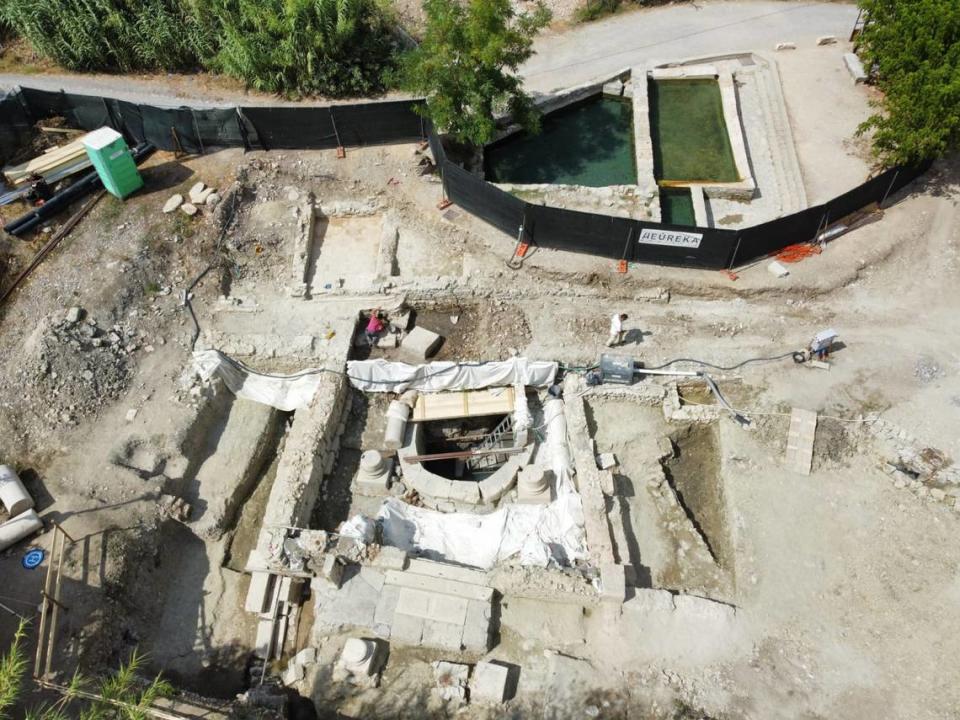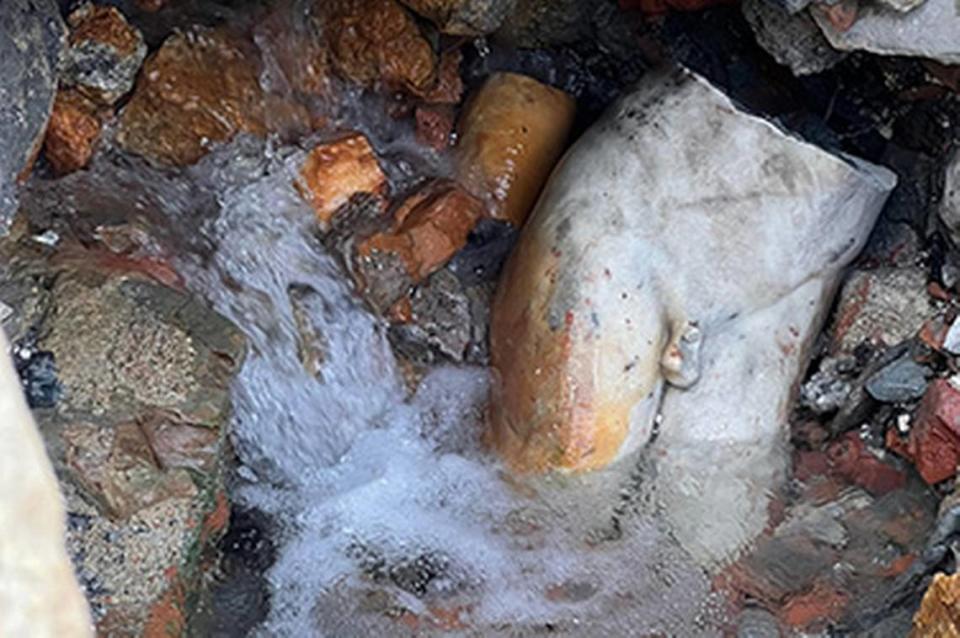Hot muddy waters hid cult’s mysterious deity for 1,500 years in Italy. See the photos
Centuries ago, a marble statue stood in a cult sanctuary. Under his watchful stone eyes, worshippers visited and left offerings in the thermal spring that flowed through the center of the temple.
Eventually, times changed. The once-revered deity was dismembered and left in the hot muddy waters. Until now.
Archaeologists were excavating the ruins of a cult sanctuary in Tuscany, Italy, when they uncovered the broken statue, according to a news release from the University for Foreigners of Siena.
The sanctuary and its central hot spring were considered sacred by the ancient Romans and the ancient Etruscans who lived in the area before them. Consequently, a temple was built around the spring and used for about 700 years, the release said.

The cult sanctuary was permanently closed in the fifth century A.D. As part of this closure, the marble statue was intentionally fragmented, placed in the hot spring and sealed with a large column, archaeologists said.
About 1,500 years later, excavations unearthed the broken statue. A photo shows the lower half of the figure, still partially submerged.

The University for Foreigners of Siena shared photos of the reassembled and restored statue in a Nov. 18 Instagram post. Put together, the statue is about 6 feet tall.
Archaeologists identified the statue as a depiction of Apollo, god of the sun, known as Apollo Sauroctonos, often referred to as Apollo Lizard-Slayer.
Over the years, several different versions of the Apollo Lizard-Slayer statue have been found, most being marble statues dated to Roman times, according to an article from the Cleveland Museum of Art. These mysterious deities, however, have lost their original religious meaning.
The excavation’s lead archaeologist, Jacopo Tabolli, told the Italian newspaper ANSA that existing statues of Apollo Lizard-Slayer did not come from specific archaeological contexts and had no surviving myths to explain the statue’s meaning.
Finding an Apollo Lizard-Slayer statue in the context of a sanctuary offers new glimpses into its meaning, Tabolli told the outlet.

The San Casciano dei Bagni sanctuary was centered on Apollo for at least a portion of its existence, the release said. Archaeologists suggested that the mysterious Lizard-Slayer depiction of Apollo may embody themes of medicinal care and protection of life in this context.
These themes fit with other bronze statues previously uncovered at the site. These statues included depictions of the Greco-Roman deities of Hygieia, the goddess of health and hygiene, and other versions of Apollo.

Archaeologists also found an altar with an inscription written in both Latin and the ancient Etruscan language of Etruria, the release said. Last year’s excavations also found about twenty bronze statues and 5,000 coins.
The sanctuary is located in San Casciano dei Bagni, about 100 miles north of Rome in the province of Siena and the larger region of Tuscany.
Google Translate was used to translate the news release and Instagram post from the University for Foreigners of Siena and article from ANSA.
Hot muddy waters hid these bronze statues for almost 2,000 years, experts in Italy say
Seven swords — left in a marsh 3,000 years ago — unearthed in Germany, photos show
Ancient community buried treasures in ritual 2,800 years ago. Searchers just found it

